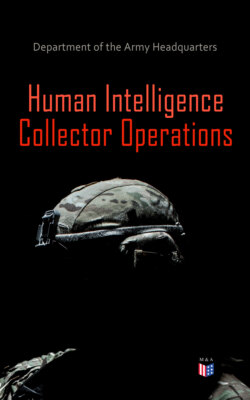Читать книгу Human Intelligence Collector Operations - Department of the Army Headquarters - Страница 95
TASK ORGANIZATION
Оглавление4-47. Because of the need to place HUMINT collectors in contact with the local population and the need in many cases to integrate the HUMINT collection process into other operations, the planning and analysis staff for HUMINT missions is somewhat expanded from the norm. They should include the C/J/G/S2X, SJA, S1, S2, S3, S4, S5, S6, other staff officers, as necessary, Provost Marshal, MP, and US Army Criminal Investigation Command, CA, unit HUMINT commanders, and senior HUMINT technicians of the deploying unit. If the unit’s mission is to replace a currently deployed HUMINT unit, a representative of that unit should be included.
4-48. The challenge to the MI commander is the proper training during operations, task organization, placement, and coordination of movement of HUMINT elements to meet collection requirements. The unit modified table of organization and equipment (MTOE) organization, which is designed for an MTW, may have to be modified to meet the specific requirements of operations in PMEs and SSCs. Augmentation is often needed and must be requested. Task organization must be flexible to adjust to the dynamic mission objectives. Commanders must allow for the augmentation of HCT with other MI specialties and non-MI personnel as mission analysis and planning indicate the need. Mission analysis and planning identify the specific requirements for the HUMINT operations section, HAT, OMTs, and HCTs.
4-49. The composition of the HUMINT elements must be based on METT-TC factors. The number of HCTs and OMTs in the theater depends on the intensity of the collection effort and the geographical coverage of the AO. HCT members should be prepared to support any HUMINT missions they may receive through command channels. They must have the skills to shift easily from one set of functions to another based on the dynamic mission requirements. The number of OMTs in a designated theater will depend on the type and nature of the mission. A single OMT is capable of managing and controlling 2 to 4 HCTs. The size and staffing of the OMT will depend on a number of factors:
Whether a HUMINT operations section is deployed and how many HCTs are subordinate to it.
If a single HCT deploys to support a small contingency, there may be no need for an OMT. In this case the team leader must serve as the OMT.
If three or more OMTs deploy, then a tactical HUMINT operations section should be deployed.
For every 3 to 4 HCTs and their designated OMT, there should be one headquarters element composed of a platoon leader and a platoon sergeant to handle all administrative and logistical matters.
